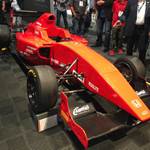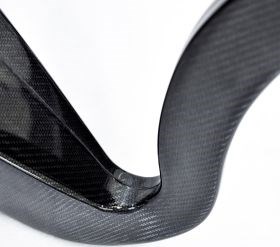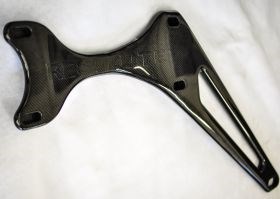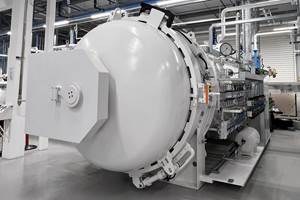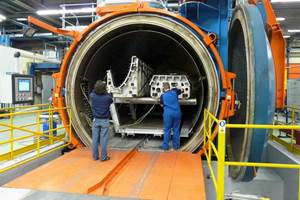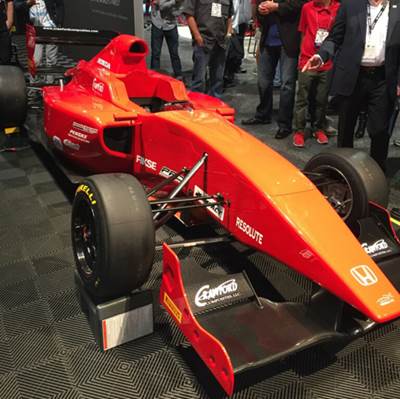Turning ideas into innovative composites
From helmets to harps to the new Formula Lites all-carbon race car, Crawford Composites pursues perfection in a wide array of carbon fiber parts.
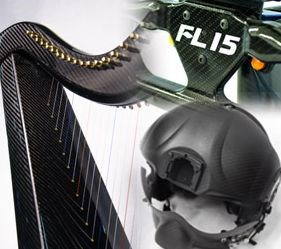
The history of (Denver, NC, US) begins with the 1966 entry into motorsports by founder, Max Crawford, in his homeland, New Zealand. Eventually settling in North Carolina, Max and his wife Jan started their composites company in 1988, where they pioneered autoclaved composite laminates in the American racing industry, including the first privately owned, non-aerospace, U.S. company to build a complete composite car – the Mazda RX7-92P – for competition in the IMSA series.
Crawford Composites has supplied parts to American and European companies and motorsports teams for a range of racing series, including NASCAR and Indy Car, and have realized their dream of building their own designs, including the Crawford SSC2k, Crawford DP03 for Daytona, Crawford DP08 and, most recently, the Crawford FL15 for the new Formula Lites series.
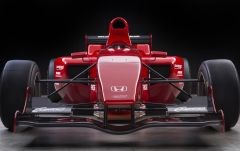
|
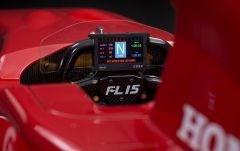
|

|
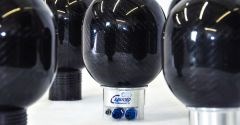
|
The Crawford Composites-designed and -built FL15 will be raced in the new
Formula Lites series and features high-quality carbon fiber composite construction (forward monocoque lower left), including a pressurized CF paddle shift system (paddle upper right and accumulator tanks lower right). SOURCE: Crawford Composites.
Developed to give young drivers an affordable way to make the leap from karting to open-wheel racing, the Formula Lites series is sanctioned by SCCA Pro Racing and will feature 12 races in 2015, with the first on May 30 at Thompson Speedway (Thompson, CT, US). All teams will compete in the FL 15. Designed and manufactured to the latest FIA specs, the cars include engine and tires from partners Honda and Pirelli, respectively, and a Crawford-designed and -built carbon fiber (CF) paddle shift system that increases shift speed and efficiency. "This is a fully carbon fiber composite car, which is great for an entry-level series like this," says Crawford Composites aerodynamicist and senior project manager Catherine Crawford. "We kept the cost low [≈one-fifth that of an Indy Lights car] but made the cars exciting to race with a decent amount of downforce, so the drivers can build their skills."
But motorsports is only part of Crawford Composites' broad resumé. Helmets for the military use a proprietary manufacturing process to maximize protection at minimal weight while achieving a non-glare, satin finish without the need for paint or other materials. Wing riggers for (Bristol, RI, US) use CF to cut weight by 75% while increasing strength and aerodynamic performance vs. the current metal systems used to mount oars to high-performance racing shells.
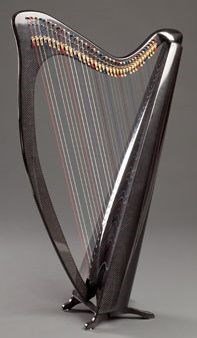
|
Crawford Composites achieves lightweight, strength and precision for Heartland Harps and Resolute Racing Shells' wing riggers.
SOURCE: Crawford Composites and Heartland Harps.
"We're not just a manufacturer," says Crawford, "we do everything: the design, aerodynamics, tooling, prototyping and production." For example, with the FL15 Crawford Composites builds the body but also the chassis, as well as all of the suspension and shift system components. Crawford adds, "Our specialty is taking someone's concept on a napkin and making it into a real part that performs beyond their expectations."
A case in point are the CF instrument structures for Heartland Harps (Zirconia, NC, US). "They brought us a wooden harp and said, 'Can you make this in carbon fiber?'," Crawford recalls. Laser scans of the harp's structures enabled engineers to bring the basic design envelope into SolidWorks (Dassault Systèmes SolidWorks Corp., Waltham, MA, US) and then evolve it — including iterations of laminate schedules and detailed prototypes — to achieve the desired acoustic performance. "The carbon fiber helps to achieve a clean, crisp sound that is not affected by humidity or environmental exposure at a fraction of the weight of wooden harps," says Crawford. The company makes components for five different CF harp models.
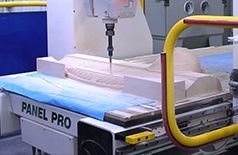
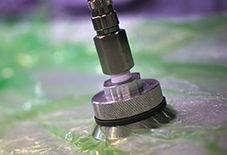
|
Crawford Composites' longstanding relationships wtih suppliers like C.R. Onsrud and Cytec has helped it to ensure high quality and precision parts.
SOURCE: Crawford Composites.
CAD/CAM tooling and 5-axis machining are key tools Crawford Composites uses to ensure accuracy and deliver promised performance in all of these applications. Crawford explains, "For machining, we invested early on in Onsrud systems [, Troutman, NC, US] due to the speed and precision they offer. The steel frames are built in-house, which gives the stability and low vibration we need." Other key suppliers include Cytec (Woodland Park, NJ, US) carbon fiber prepregs, (Santa Ana, CA, US) and Newport Adhesives, now (Irvine, CA, US). Crawford says most of the company's parts are built using their two autoclaves. "It allows a very high level of performance and finish," she notes.
Another key aspect to Crawford Composites' success is its roots in real engineering. "We see a real issue today in that many graduting engineering students don't understand the principles behind [computer aided design] CAD, [finite element analysis] FEA and [computational fluid dynamics] CFD," says Crawford. "They don't know how to design parts that you can actually build." For this reason, Crawford Composites brings burgeoning engineers in and starts their training on the shop floor, running the machines and learning hand layup. They have apprenticeship programs through local colleges and also internships via local high schools.
"We build so much that we can't talk about for NASCAR and Indy Car, large automotive organizations and the military," says Crawford. "Our ability to build parts that work, but also achieve really innovative designs and very high quality are some of the reasons they keep coming back."
Related Content
Industrial composite autoclaves feature advanced control, turnkey options
CAMX 2024: Designed and built with safety and durability in mind, Akarmark delivers complete curing autoclave systems for a variety of applications.
Read MoreBusch expands autoclave solutions
Busch announces its ability to address all autoclave, oven and associated composites manufacturing requirements following the acquisition of Vacuum Furnace Engineering.
Read MoreIndustrial curing autoclaves with advanced control systems
CAMX 2025: Turnkey Akarmak autoclaves support various composite curing needs with enhanced process control, international specification compliance and optimal heat distribution.
Read MorePlataine unveils AI-based autoclave scheduling optimization tool
The Autoclave Scheduler is designed to increase autoclave throughput, save operational costs and energy, and contribute to sustainable composite manufacturing.
Read MoreRead Next
Crawford Composites unveils Crawford FL15 racecar
The Crawford FL15 will be used exclusively in the new announced Formula Lites racing series, to be sanctioned by SCCA Pro Racing beginning in 2015.
Read MoreAll-recycled, needle-punched nonwoven CFRP slashes carbon footprint of Formula 2 seat
Dallara and Tenowo collaborate to produce a race-ready Formula 2 seat using recycled carbon fiber, reducing CO2 emissions by 97.5% compared to virgin materials.
Read MoreAssembling the Multifunctional Fuselage Demonstrator: The final welds
Building the all-thermoplastic composite fuselage demonstrator comes to an end with continuous ultrasonic welding of the RH longitudinal fuselage joint and resistance welding for coupling of the fuselage frames across the upper and lower halves.
Read More